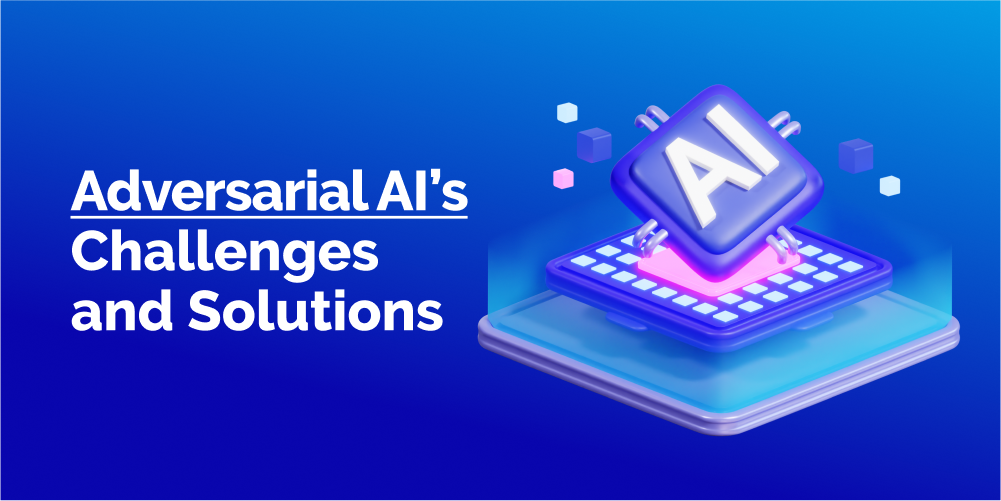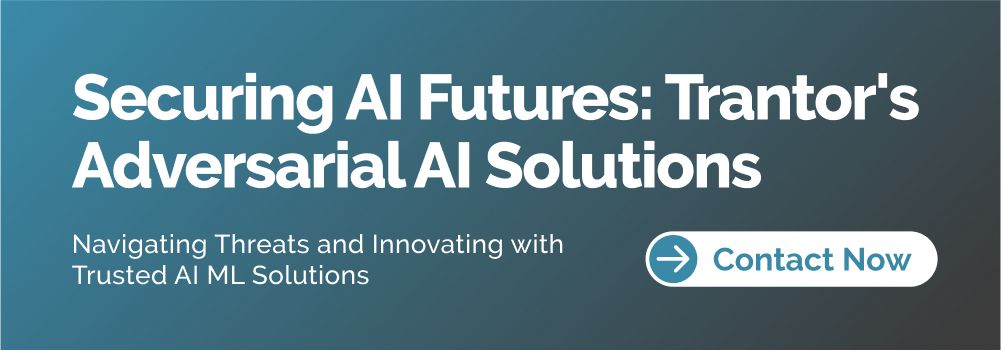Artificial Intelligence, zBlog
Adversarial AI Unveiled: Navigating Obstacles, Embracing Solutions

Introduction
As artificial intelligence (AI) systems continue to advance and pervade various domains, the potential risks and vulnerabilities associated with these technologies have become increasingly apparent. One area of growing concern is the emergence of adversarial AI, which refers to the deliberate manipulation of AI systems to produce unintended or harmful outcomes. This blog post explores the challenges posed by adversarial AI, discusses potential solutions, and highlights the importance of proactive measures to mitigate these risks.
Understanding Adversarial AI
Adversarial AI encompasses a broad range of techniques and tactics aimed at deceiving, misleading, or disrupting AI systems. These attacks can take various forms, including:
- Adversarial Examples: Carefully crafted input data, such as images or text, designed to cause an AI model to misclassify or misinterpret the input, even when the perturbations are imperceptible to human observers.
- Data Poisoning: Introducing malicious or corrupted data into the training dataset, leading to biased or compromised model performance during inference.
- Model Stealing: Extracting or replicating the functionality of a proprietary AI model, potentially bypassing intellectual property protections or enabling unauthorized use.
- Evasion Attacks: Crafting inputs that bypass security or detection mechanisms, allowing malicious actors to evade AI-based systems designed to identify and mitigate threats.
- Adversarial Reprogramming: Manipulating the training process or model updates to alter the behavior of an AI system, potentially causing it to execute malicious actions or make undesirable decisions.
These adversarial techniques can have severe implications across various domains, including computer vision, natural language processing, cybersecurity, and autonomous systems. For example, adversarial examples could lead to misclassifications in image recognition systems, potentially causing self-driving cars to misidentify traffic signals or security cameras to miss critical events. Data poisoning attacks could compromise the integrity of AI-powered decision-making systems, leading to biased or harmful outcomes.
Challenges and Risks

The rise of adversarial AI poses several challenges and risks that must be addressed to ensure the safe and reliable deployment of AI systems:
- Robustness and Security: Existing AI models often exhibit vulnerabilities to adversarial attacks, highlighting the need for more robust and secure architectures that can withstand such threats.
- Unintended Consequences: The potential for adversarial AI to cause unintended and potentially catastrophic consequences, especially in safety-critical applications like healthcare or transportation, is a significant concern.
- Trust and Accountability: As AI systems become more pervasive, adversarial attacks could undermine public trust in these technologies and raise questions about accountability and responsibility.
- Regulatory and Legal Implications: The legal and regulatory frameworks surrounding adversarial AI are still evolving, creating challenges in terms of liability, governance, and establishing clear guidelines and best practices.
- Arms Race: The ongoing cat-and-mouse game between adversaries and defenders could lead to an escalating arms race, with adversaries continuously developing new techniques to bypass the latest defenses.
Addressing these challenges requires a multifaceted approach involving technical solutions, ethical considerations, and collaborative efforts among researchers, developers, policymakers, and stakeholders.
Potential Solutions and Mitigation Strategies

To mitigate the risks posed by adversarial AI and enhance the robustness and security of AI systems, various solutions and strategies can be explored:
- Adversarial Training: Incorporating adversarial examples into the training process can help AI models develop resilience against such attacks. Techniques like adversarial data augmentation and adversarial regularization can improve model robustness.
- Defensive Distillation: This technique involves training a secondary “distilled” model on the outputs of the primary model, with the aim of reducing the sensitivity of the model to adversarial perturbations.
- Input Preprocessing and Sanitization: Implementing input preprocessing techniques, such as image transformations or text sanitization, can help detect and mitigate adversarial inputs before they reach the AI model.
- Ensemble Methods: Combining multiple diverse models or leveraging ensemble techniques can improve overall robustness by reducing the impact of individual model vulnerabilities.
- Anomaly Detection and Monitoring: Developing advanced anomaly detection systems and continuous monitoring mechanisms can help identify and flag potential adversarial attacks or anomalous behavior in real time.
- Secure Model Deployment: Implementing secure model deployment strategies, such as federated learning or secure enclaves, can help protect AI models from unauthorized access or tampering.
- Explainable AI and Interpretability: Promoting explainable AI and model interpretability can aid in detecting and diagnosing adversarial attacks, as well as facilitate transparency and accountability.
- Ethical and Regulatory Frameworks: Establishing robust ethical frameworks, guidelines, and regulations can help mitigate the risks associated with adversarial AI and promote responsible AI development and deployment.
- Collaboration and Information Sharing: Fostering collaboration and information sharing among researchers, industry leaders, and relevant stakeholders can accelerate the development of effective defense mechanisms and promote a coordinated response to threats.
It is important to note that no single solution is a silver bullet, and a comprehensive approach combining multiple strategies and ongoing vigilance is necessary to effectively address the challenges posed by adversarial AI.
Ethical Considerations

Beyond technical solutions, addressing adversarial AI also requires careful consideration of ethical implications and potential unintended consequences. Key ethical considerations include:
- Privacy and Data Protection: Ensuring that defensive measures against adversarial AI do not compromise individual privacy or enable unauthorized data collection or surveillance.
- Fairness and Non-discrimination: Mitigating the potential for adversarial attacks to exacerbate existing biases or discriminatory outcomes in AI systems.
- Transparency and Accountability: Promoting transparency and accountability in the development and deployment of AI systems, including clear communication of potential vulnerabilities and mitigation strategies.
- Dual-Use Concerns: Recognizing that some defensive techniques or adversarial AI research could potentially be misused for malicious purposes, and implementing appropriate safeguards and ethical guidelines.
- Human Rights and Societal Impact: Assessing the broader societal implications of adversarial AI, including potential impacts on human rights, freedom of expression, and democratic processes.
Integrating ethical considerations into the development and deployment of adversarial AI solutions is crucial to ensuring that these technologies are aligned with societal values and priorities.
The Role of Collaboration and Coordination

Addressing the challenges posed by adversarial AI requires a collaborative effort involving various stakeholders, including researchers, industry leaders, policymakers, and civil society organizations. Some key areas for collaboration and coordination include:
- Research and Knowledge Sharing: Promoting open and responsible sharing of research findings, best practices, and threat intelligence related to adversarial AI can accelerate the development of effective countermeasures.
- Standard Setting and Benchmarking: Establishing industry standards, benchmarks, and evaluation frameworks for assessing the robustness and security of AI systems can facilitate consistent and comparable measurement of progress.
- Awareness and Education: Raising awareness about adversarial AI risks and providing educational resources for developers, practitioners, and decision-makers can promote better understanding and preparedness.
- Policy and Regulatory Frameworks: Collaborating on the development of appropriate policy and regulatory frameworks can help establish clear guidelines, promote responsible AI development, and ensure accountability.
- Public-Private Partnerships: Fostering partnerships between the public and private sectors can leverage collective expertise, resources, and capabilities to address the multifaceted challenges posed by adversarial AI.
By fostering collaboration and coordination among diverse stakeholders, the AI community can collectively strengthen defenses against adversarial threats and promote the responsible and trustworthy development of AI technologies.
Conclusion
As AI systems continue to evolve and become more deeply integrated into various aspects of our lives, the threat posed by adversarial artificial intelligence cannot be ignored. Addressing this challenge requires a multifaceted approach that combines technical solutions, ethical considerations, and collaborative efforts among researchers, developers, policymakers, and stakeholders.
By implementing robust defensive measures, promoting transparency and accountability, and fostering collaboration and coordination, we can navigate the challenges posed and ensure that these powerful technologies are developed and deployed in a responsible and trustworthy manner.
Trantor is at the forefront of developing innovative Artificial intelligence, Machine Learning, Automation, and RPA solutions that prioritize security, robustness, and ethical considerations. Trantor’s offerings aim to provide cutting-edge technology while proactively addressing potential vulnerabilities and promoting responsible AI development. Trantor is committed to delivering cutting-edge technology that drives efficiency and innovation and upholds the highest standards of trustworthiness and responsible AI development by prioritizing security, robustness, and ethical considerations throughout our AI and automation solutions.
At Trantor, we remain dedicated to continuously evolving and adapting our approaches to stay ahead of emerging threats while fostering a future where AI technologies are harnessed for the greater good of society.




